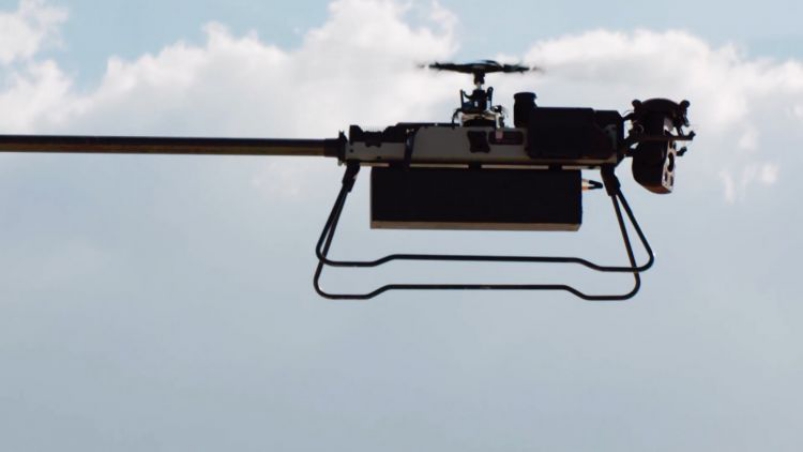The UK Royal Marines have tested “game-changer” drone technology as they develop Future Commando Force capabilities on the Cyprus shores.
As the amphibious force transforms, the Littoral Response Group (Experimentation) (LRG(X)) has offered a chance for them to try out new operational concepts.
Having already tested new waters, operating in groups of 12 rather than eight and using autonomous technology, it was time to reshape the way commandos are fed munitions, food and information.
Controlled by personnel anywhere within a 70 km radius, a Malloy unmanned aircraft carrying supplies made the journey to a group bunkered down ashore.
“Always, resupply has been done by guys carrying stuff and running it forward… to a certain point,” said Major Kris Dawson, Officer Commanding Bravo Company, 40 Commando Royal Marines.
So, he said, the ability to use drones can “bridge pretty significant gaps” in the way marines resupply.
“We’re talking about flying platforms like that from shipping to then come ashore, so that could be an absolute game-changer,” he said.
The Royal Marines are working with industry partners to push the Malloy system, hoping to develop a human-transport capability to aid with medical casualty evacuation.
(LRG(X)) also saw personnel test the Ghost drone concept, to see how its qualities in intelligence, surveillance, and reconnaissance (ISR) could benefit the amphibious force.
While still in development for the Future Commando Force and with a range limited to 20 km, the Ghost can capture thermal images and footage from 3,000 ft above sea level.
Notably, multiple drones can each fly pre-programmed routes, offering a total battlefield view to a single commander, spotting potential threats and notifying the pilot, without the need for constant scanning of drone feeds.
Colonel Chris Haw, Commanding Officer, 47 Commando, spoke about the other developments taking place on the shoreline region.
“One of the biggest things that we’ve trialled here, and we’ve trialled in previous iterations in Norway, for example, has been developing a communication system that can connect the man on the ground to the ship and right back to the UK,” he said.
An intelligence network like this would paint a more complete picture back in UK headquarters, while experimental technology would allow data to flow from drone to operation rooms to troops.

